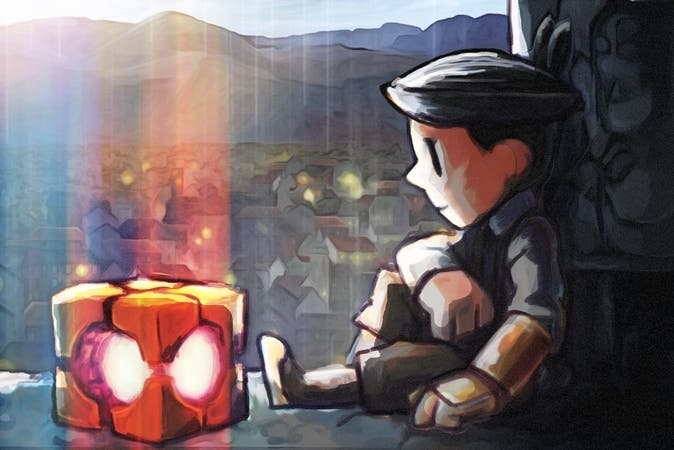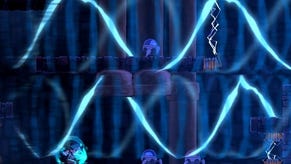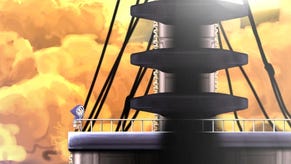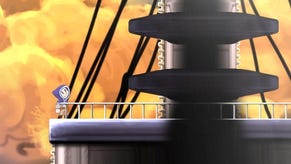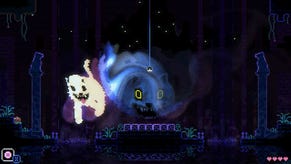Teslagrad review
Rules of attraction.
A wide blue column of electrical energy shimmers and spirals upwards from the centre of the stratospheric tower in which Teslagrad is set. The building is a forsaken asset left over from some recent European conflict, which is only just drawing to a weary close. The column of energy acts as a both a physical spine - a kind of elevator shaft that leads off towards the tower's labyrinthine network of rooms - and a thematic one: this is a game built around the concepts of magnetism and electricity.
Nikola Tesla, the electrical engineer from whose life and work the game borrows its name and ideas, once built a tower in New York, but this is a different sort of place, more like an electrified castle filled with Castlevania-esque nooks and cellars. The tower rises spectacularly, the centrepiece of an unspecified European capital, which now burns around its foundations in war's ugly afterglow.
Teslagrad is anything but ugly, however. Its expressive hand-drawn art is at times reminiscent of Winsor McCay's Little Nemo, but there's a Scandinavian flourish that adds melancholy to the folksy charm. Crackling bolts of blue electricity and red, sinister droning magnetic fields offset the browns and yellows of the tower's bricks. Creeping bugs, cloying shadow figures and bipedal robot giants patrol its floors, a curiously diverse gallery of squatters in a place whose original function is never made obvious.
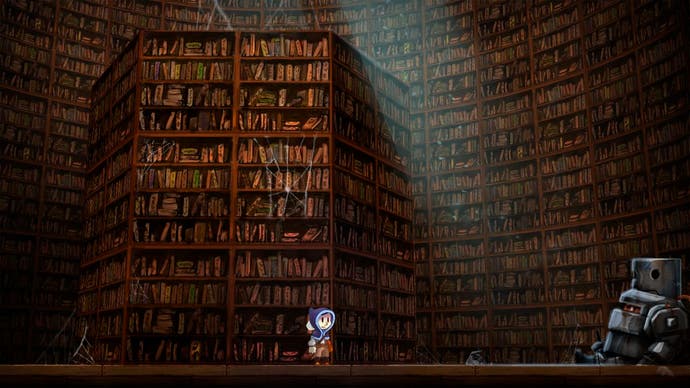
One area houses a giant tree, its branches tenaciously grasping its leaves in the overcast air; another is filled with conveyor belts that courier dollops of scrap metal off to who-knows-where. Other rooms are dedicated puppet theatres, used by the designers to stage short plays, which tell the whisper of a story in a game that belligerently shuns any text and dialogue. Tesla's Tower is the architecture of a fever dream, as if jotted down by its dreamer at daybreak.
Structurally, the game follows the Metroidvania tradition. You begin as a powerless young boy, fleeing the town's occupying forces by scrambling over rooftops. The Tesla Tower initially offers simple refuge from the soldiers, but as the game unfurls, you discover discarded tools within its walls and new areas duly open up for exploration. There's a glove which can be used to infuse objects with electrical charge, a trinket that allows you to dart a few metres through the air in the blink of an eye, a fur-lined hood that allows you to set your own polarity and others'.
In the main this is a platform puzzle game, many of its objects charged with red or blue electricity. These must be manipulated to attract or repel one another in order to create platforms and pathways where there were none. In time, even your own character can be imbued with magnetic charge and, as your range of abilities expands, so you are able to revisit previously explored areas to uncover yet more secrets.
Once you've perceived the solution to a puzzle there's then the tricky business of execution - this is a game that makes tall demands of its players' sense of timing and dexterity. This is never more apparent than in the game's intermittent set-piece battles with hulking mechanical monsters. In one area you fight a screen-tall gurning furnace, its eyes glowing with fire, its mouth sucking and grinding. In another, you must attempt to electrocute the belly of a mechanical bird as it flaps and claws at you, before laying eggs that sprout motorised minions.
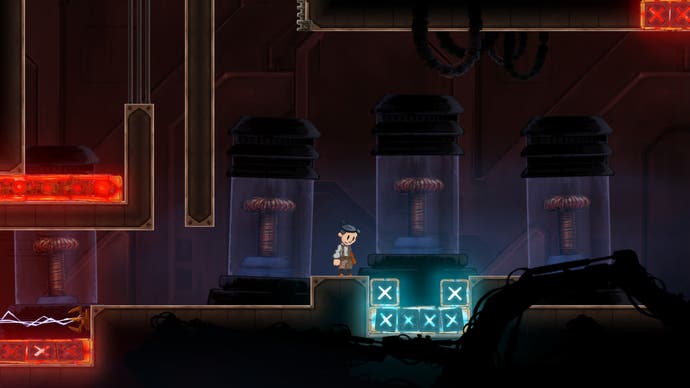
These fights are unusually and somewhat anachronistically challenging, requiring players to time leaps, dashes and attacks with painful precision. There are no checkpoints here and, as your character has no health bar, sustaining a single hit will force a restart from the beginning of the fight. There is a great deal of repetition to learn a boss's attack patterns. Moreover, these unblinking brutes require more than the Nintendo-stock three successful hits before they'll topple. Until you build up the requisite muscle memory they will block your progress through the much more easygoing exploratory sections of the tower.
The unevenness of the challenge extends to the exploratory puzzles, some of which are peculiarly convoluted. There's ingenuity to the designs, but the learning curve lacks an elegant trajectory, a typical issue for an independent developer without the gentle feedback of an experienced publisher to add some perspective and kink-smoothing guidance.
For example: any sprawling Metroidvania title demands a clear map to aid navigation. The extensive backtracking and interlocking areas mean that not only is it easy to get lost in this kind of game, it's also often unclear where you are supposed to head next. Teslagrad's map is a clear weakness: it shows only the closest rooms to your current location and there's no option to scroll around in order to better locate yourself in the world. At times you will be unsure whether your inability to progress down one of the tower's corridors is because there is a puzzle to be solved, or because you don't yet have the requisite tool in your arsenal. This is a problem that's symptomatic of the genre, but it's particularly pronounced in this game.
Nevertheless, despite its unevenness and occasional cruelty, Teslagrad is a bold and captivating proposition. The unusual and elegant aesthetic is persistently attractive, and the lightness of touch with the storytelling brings the world-building to the fore. Its Nordic development team are fledgling (this is only their second game) and there's fidgety keenness to the game's ideas and creative execution. Teslagrad would have benefited from a more experienced publisher to help round off the sharp edges and better balance the challenge. But in the meantime, this is a rough yet worthwhile jewel.
